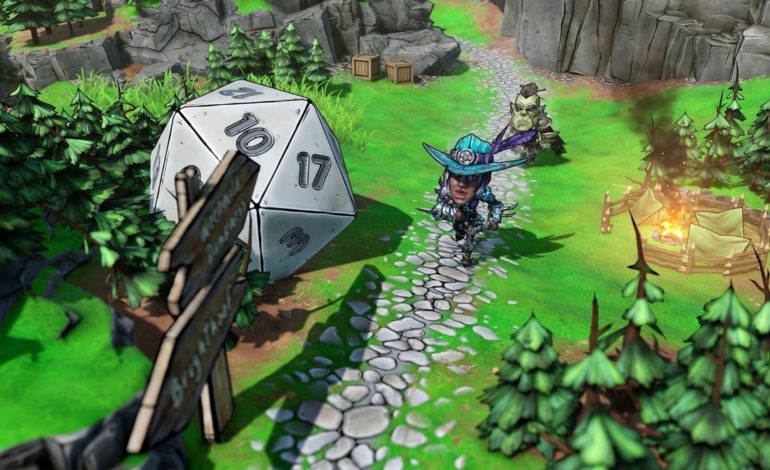

Recently, we got our first look at the gameplay of Tiny Tina’s Wonderlands, the borderlands spinoff that’s mixing high-fantasy with heavy ordinance, where players got to check out the new multiclass system which gives gamers the chance to use skills from different classes on the same character. Mechanics like these are such a great fit for Wonderlands not only for the zany combos players will inevitably discover, but also because it’s leaning more heavily on the tabletop mechanics that inspired it. Tiny Tina’s Wonderlands is a direct sequel to the Borderlands 2 DLC Assault on Dragon Keep, and both of them take the form of what’s effectively a D&D game played in the apocalyptical world of Pandora. As such, both have taken more than a few pages out of these books to build systems which complement each other and give the player more variety in building their character.
In an interview with Gamespot, the development team talked in detail on how Wonderlands will be different from Borderlands, including plenty of traditionally tabletop ideas. The game’s Senior Producer, Kayla Belmore, explained that character creation will be an important part of making the player a real part of the game’s world. You’ll even have the freedom to pick out notably less-human qualities in the character creator, so get wild with it!
You get to choose your own voice and some other fun stuff that we can’t quite dive into yet, but it goes into even your character’s personality, not just aesthetics, and it’s all independent.
None of these choices will dictate how the player wants to build their abilities, though. Matt Cox, the game’s creative director, explains “we want you to be able to express your visuals and your play style, the way that you want.” There will be more than enough room for expression, especially because of the aforementioned option to multiclass. However, the developers also shared that multiclassing won’t be available until the main plot of the game is finished, after which players can go back and set up their secondary class. This doesn’t mean there won’t be plenty of options at the start of the game, though. Every character comes with their own stats: strength, dexterity, intelligence, wisdom, constitution, and attunement. If most of these sound familiar, then you’ve probably recognized that this too is a traditional tabletop system built into Wonderlands. There’s also one more stat that won’t be upgradable until the endgame: luck, which will give players higher-rarity loot more often.
Finally, traveling has been overhauled to further embody tabletop gaming. Instead of simply wandering a massive open world, Tiny Tina’s Wonderlands will put players into a third-person perspective overlooking their miniature character as they explore their environment, then transfer them back into first-person when a fight starts. In Cox’s own words:
So you can have a little enemy pop up and then you’ll get transported seamlessly into first-person combat where you do a small fight, get your loot, and pop back out to further explore the entire Overworld.
This “Overworld” will account for most of the travel in the game, as well as connecting the player to side-missions or any of the five optional maps in the game, which will act as smaller “modules” that gamers can check out if they so please.
Tiny Tina’s Wonderlands releases March 25th for Xbox Series X|S, Xbox One, PS5, PS4, and PC.
Play games, take surveys and take advantage of special offers to help support mxdwn.
Every dollar helps keep the content you love coming every single day.
